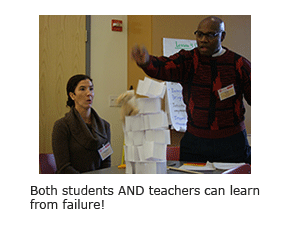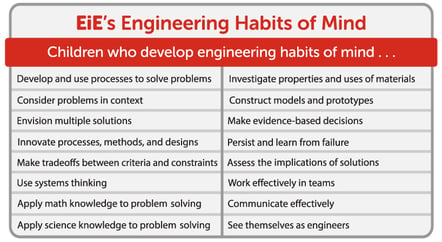Failure is Not an Option is the title of Gene Kranz’s autobiography. The phrase expresses how Kranz, a NASA flight director, and his team approached problems of all kinds—most notably, how to get the Apollo 13 astronauts home safely after a disastrous explosion in the service module. When I was fresh out of school and working my first job, I had a coffee cup with this slogan. The idea is common in American culture: in the workplace, in relationships, in schools. 
For the Apollo mission, a no-failure mindset was exactly what the team needed to find a solution, and fast. But framing success as the only option is a problem in schools, especially in the elementary classroom—and especially if classroom instruction is focused on getting the one right answer.
The experience of making a mistake, or being wrong, is part of life, but it can be overwhelming for kids. Students who fail repeatedly may internalize the belief that they just don’t have the ability to succeed. Other kids may be so afraid to fail, they don’t even try.
Actually, Failure IS an Option—When It Helps You Learn
Here’s the ironic thing about the NASA slogan: The engineers on Kranz’s team who designed the systems that kept the astronauts alive and brought them safely home were able to succeed because they’d learned from failure in the past—as students in engineering classes, on the job, and even during the emergency. Engineering routinely involves designing and testing different solutions—and not all of them succeed.
Indeed, working engineers may deliberately test their designs to the point where they fail, then use the information from the tests to go back and make improvements. Scientists learn from failure, too, notes Ainissa Ramirez, author of Save Our Science: How to Inspire a New Generation of Scientists, in a blog post for Edutopia. “Scientists fail all the time,” she wrote. “We just brand it differently. We call it data.”
Fail, Then Improve: Watch It Happen
At EiE we consider learning from failure to be an “engineering habit of mind”—a systematic way of thinking that supports learning in all academic subjects. Engineering is a way to develop a positive mindset toward failure. When students tackle an engineering design challenge—for example, making an automated alarm system or a model submersible—they follow an engineering design process. In our case, it's an age-appropriate, five-step process: “Ask, Imagine, Plan, Create, Improve.” The expectation that you may fail on the way to success is built right into the “Improve” step.
The short video below shows how students in a Fall River, Massachusetts classroom react to failure. The fourth graders in these scenes have been working in groups to design a model of a water-permeable membrane that, when installed in a model terrarium, will let in enough water to keep a frog’s skin moist—but not so much water that the habitat floods.
You see the teacher circulate from group to group as the students test their membranes. Some designs fail—water pours right through. Despite the failures, the students are engaged and smiling; at the end, it’s a student, not the teacher, who cheerfully says, “We definitely have to improve.” And from the way the students mention different materials for making membranes, you can tell they’re already thinking about what their next design might look like.
What Can Teachers Do?
Teachers can apply several strategies to promote fearlessness around failure. In his book Motivating Students to Learn, Jere Brophy describes a variety of supportive behaviors that highly effective teachers use. In particular, they praise the effort that goes into the work, instead of the outcome; in fact, the most effective teachers often insist on better effort. Other researchers have found that teachers can remove the stigma from failure when, instead of focusing on controlling what happens in the classroom, they support students in taking responsibility for themselves.
So these days, I’m shopping for a new coffee cup. I’ve seen one I like. It reads: “Failure is not an option. With life, it comes standard.”
Engineering is Elementary is a project of the National Center for Technological Literacy® at the Museum of Science, Boston.








